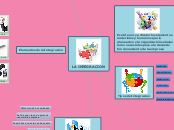característiques d'una empresa
To name your story, you have to think about the overall message and what you want your audience to understand from the story. Also, make it relevant and easy to remember.
objectius
tota activitat està orientada a unes metes
supervivència
satisfacció dels clients
creixement personal
benefici econòmic
organitzats
The ending of a story is essential. We all know that if the ending is weak, what happened before loses its importance. So make it unpredictable, but fair. A resolved ending answers all the questions and ties up any loose threads from the plot.
coordina els recursos a través de diferents funcions
This is the moment when the main character surpasses the last obstacle and finally faces their greatest challenge.
The climax usually follows one of these patterns:
- realization
- resolution
- choice
Type in your answer.
àrea de recerca
àrea de comercialització
àrea de producció
àrea econòmica i financera
àrea personal
direcció
elements
The middle of the story is where you add layers of complications that will lead to the end. Reveal more about the character's journey. Did their personality go through changes? How did they overcome the challenges? And as you build up the story’s central conflict, make it more personal to that character. Also, from the middle act, you have to lead into the final act.
Recursos intagibles
There wouldn't be any tension and excitement in your story if there weren't any obstacles in your character's way.
la marca de la empresa
acord dels empleats i els propietaris
segur medic
Recursos materials
Your character(s) need(s) motivation in order to solve the challenge(s).
recursos naturals
Why does your character need to confront this challenge? What does he/she expect to accomplish by solving it?
See a few examples:
- will marry in 3 days
- can fix the mistakes of the past
llum solar
aigua
gas natural
blat
minerals
Persones que treballen a l'empresa
Each story has a main character and that character usually needs to solve a problem or challenge. The character's challenge is the one that creates tension throughout the story.
Director
Type in any other challenges which other characters in the story need to face.
Comercials
In most stories, there are 3 challenges. The number 3 is a mystical number symbolizing completeness. Try to come up with interesting challenges with which your character needs to struggle.
See a few examples below:
- turns into a werewolf at night
- is sent back in time
Empleats
activitat
In the beginning of the story (or the exposition), you will need to introduce the setting and characters. You might also want to introduce the main conflict. This part of the story is important because it gives the reader necessary background information and maybe even a first insight into a character’s personality.
sector terciari
entreteniment
turisme
distribució
administració publica
transport
sector primàri
The setting (time & place) of a story can change throughout the plot.
mineria
The weather is an important element in your story because it can highly influence the ambiance and the mood of the characters.
pesca
The time of the story can also change. It can describe the event of a single day or can include an entire year's plot. Anyway, don't forget to mention it.
ramaderia
agricultura
Your story can take place wherever your imagination will take you to.
For example: in an elevator, in an enchanted forest, etc. Don't forget to give details of the environment each time the setting changes, otherwise, the story can be confusing. Also, mention the seasons as each of them has unique weather and events.
sector secuandàri
Characters are essential to a good story. Usually, the protagonist(s) is/are the most affected by the plot. Introduce a character by focusing on their actions, interests, and occupation, as the physical appearance doesn't make a difference in most cases.
producció tèxtil
elaboració de metalls
produccio d'automovils
engeneria
Type in the name of your character.










